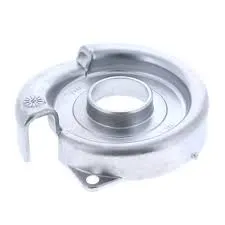Mobile:+86-311-808-126-83
Email:info@ydcastings.com
Optimizing Dust Collector Impeller Design for Enhanced Airflow Efficiency and Performance
The Importance of Dust Collector Impellers in Industrial Applications
In various industrial processes, dust and particulate matter are inevitable byproducts. Whether in woodworking shops, metal fabrication facilities, or pharmaceutical manufacturing plants, dust can pose significant challenges, compromising air quality, reducing equipment efficiency, and posing health risks to workers. To combat these issues, dust collection systems are implemented, and a critical component of these systems is the dust collector impeller.
What is a Dust Collector Impeller?
A dust collector impeller is a vital part of the dust collection system that aids in moving air and particulates through the filtration process. Typically made from materials such as steel, aluminum, or reinforced plastics, the impeller is designed in various shapes and sizes depending on the type of dust collector and the specific application. Its primary function is to create a powerful airflow that captures and transports dust and debris from the source to a collection point.
How Does it Work?
When the dust collector system is activated, the motor drives the impeller, causing it to rotate rapidly. This rotation generates centrifugal force, which effectively pulls airborne dust particles into the system. As air enters the impeller, it is accelerated outward, creating a low-pressure zone. This low pressure draws more air into the system from the work area, allowing for a continuous cycle of dust removal.
Once the dust-laden air enters the dust collector, it typically flows through filters or cyclones that separate the particulates from the air stream. The clean air is then expelled back into the environment, while the collected dust accumulates in a designated collection container for disposal or recycling. The effectiveness of this entire process heavily relies on the design and functionality of the impeller.
Factors Influencing Impeller Performance
Several factors influence the performance of dust collector impellers, including
dust collector impeller

1. Blade Design The shape and angle of the impeller blades are crucial. Efficient designs enhance airflow, ensuring maximum dust capture while minimizing energy consumption. Radial, backward-curved, and forward-curved impellers serve different applications based on their specific airflow and pressure requirements.
2. Speed of Rotation The rate at which the impeller spins directly affects its ability to move air and dust. Higher speeds can result in increased airflow but may also lead to noise and wear. Balancing these factors is essential for optimal performance.
3. Material The durability and resistance of the material used for the impeller can impact its longevity and performance. Corrosive environments may necessitate specialized coatings or materials to prevent degradation.
4. Sizing The size of the impeller must be compatible with the overall dust collection system. An under-sized impeller may not generate sufficient airflow, whereas an over-sized one can lead to increased turbulence and energy inefficiency.
Maintenance and Care
Regular maintenance of the dust collector impeller is crucial to ensure its longevity and efficiency. Dust build-up can hinder performance, so cleaning the impeller and surrounding components regularly is recommended. Additionally, inspecting for wear and tear, checking for any damage, and replacing any worn parts can prevent costly downtimes and ensure optimal operation.
Conclusion
The dust collector impeller plays a critical role in maintaining industrial air quality and protecting the health of workers. By efficiently capturing and transporting dust and particulates, it contributes significantly to the overall effectiveness of dust collection systems. Understanding the mechanics, performance factors, and maintenance of dust collector impellers is essential for industries that prioritize cleanliness and worker safety. As regulations regarding air quality become stricter and industries seek to improve their sustainability practices, the demand for efficient dust collector impellers will only increase, making them a key component in modern industrial operations. Investing in quality impellers not only enhances operational efficiency but also promotes a healthier and safer working environment.
-
Why Should You Invest in Superior Pump Castings for Your Equipment?NewsJun.09,2025
-
Unlock Performance Potential with Stainless Impellers and Aluminum End CapsNewsJun.09,2025
-
Revolutionize Your Machinery with Superior Cast Iron and Aluminum ComponentsNewsJun.09,2025
-
Revolutionize Fluid Dynamics with Premium Pump ComponentsNewsJun.09,2025
-
Optimizing Industrial Systems with Essential Valve ComponentsNewsJun.09,2025
-
Elevate Grid Efficiency with High-Precision Power CastingsNewsJun.09,2025











